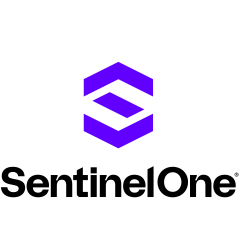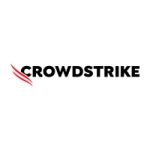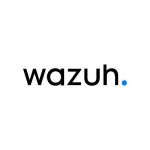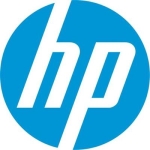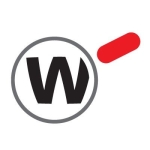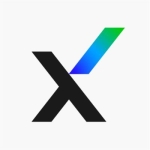What is our primary use case?
We use SentinelOne's EDR platform. We use Ranger for network discovery. It helps to find out any endpoints that do not have an agent or rogue devices that may come up on the network that are not protected. It allows us to isolate them until we have the proper protections in place.
We are starting to delve into Identity.
How has it helped my organization?
The EDR platform has helped us achieve our business goals by providing the best security against ransomware, which is the number one threat to our business.
We have seen a lot of benefits since we deployed SentinelOne many years ago. We were able to consolidate around eight different antiviruses globally. It saved us licensing costs, human capital, and the amount of time it takes to keep up with some of the legacy technologies.
Other than that, the product gives us so much visibility to things. We did not have that visibility before. It also gave us access to every endpoint globally from a single platform. My engineers and my SOC operators are able to touch every endpoint globally in a matter of seconds. We are able to consolidate all the data that we are getting from the platform. We then build rule sets and protections and automate playbooks to be able to help save time so that we can focus on some of the bigger threats that we have.
SentinelOne has had a huge impact on our risk management posture. In my viewpoint, any threats, especially with ransomware being the biggest threat to our business, can lead to downtime for operations. If manufacturers are not making the product, we are not making money.
SentinelOne has helped us improve our analyst efficiency because of the simple fact that it is a single singular platform where they have access to every endpoint data that is out there in the world in our scope of devices. It gives them the ability at their fingertips to dive deep into the telemetry data that they need to make a justification or make a decision about a threat.
SentinelOne helps us reduce noise. We also leverage SentinelOne Vigilance as a managed service provider, which takes away the load from my analysts. It enables us to develop playbooks to cut down the noise and helps us to prioritize what matters the most, which makes us way more efficient. It makes us speedier when it comes to the time to react to a threat.
SentinelOne, especially the Vigilance team, helps us to reduce false positives. It is not only because the technology itself is so good at what it does; it is also because of the information that we get related to a threat or an alert. The information is enough for us to have some sort of disposition on what that is. We can then write a rule or mute that through a click of a button so that it is not constantly coming to the surface.
SentinelOne helps us with our incident response process tenfold. We have so many options, from automation to using Purple AI, to give my analysts more confidence in their abilities. It is an amplifier. It is not a replacement. It is a way for them to build their confidence and skill set, but it also increases our efficiency and our time to respond to threats. The storylines with SentinelOne were probably one of the first things that caught my attention back when EDR was new to the market. They help the analyst develop a storyline or improve the storyline that they have already developed.
SentinelOne helps us with our mean time to detect by the fact that we have every endpoint consolidated into one platform. We have the prioritization based on the rule sets, the type of devices, the classification of the data it holds, or the classification of the department or the sensitivity of a manufacturing process in that environment. These methods help to cut the detection time for my analysts.
The platform provides multiple ways to communicate. With the addition of Vigilance and their main services, there is a very drastic reduction in the mean time to respond based on the information they give us. The information that we receive from those methods helps us to make a lot quicker decisions with the threats.
From an organizational perspective, SentinelOne helps me and empowers my team to be able to communicate to the business about some of the adversarial threats that we have in our environment. A lot of times when an endpoint or a production or line unit is impacted, the teams come to us with reports of a false positive, but in fact, it is not. SentinelOne helps us to educate, inform, and reinforce to the organization why we are here. We are here to help. We are here to help the business grow.
What is most valuable?
When we first looked at SentinelOne, we had a very distributed legacy antivirus environment. Through SentinelOne's platform, we were able to consolidate about eight different antiviruses globally, thus saving money and time. There were savings in terms of human capital or the amount of time it takes to keep up with some of those legacy technologies.
What needs improvement?
Like any vendor, SentinelOne had its challenges, but throughout our history as a partner and as a customer, they followed through with every commitment they made. That is huge. I do not look for a vendor, I look for a partner—a long-term partner. CISOs need partners to be successful. We have to lean on each other. There are things that they can do to improve the console or improve the product, and they are making strides in it. One value that I can bring to them is the fact that I am on the advisory board. As a customer, we bring problems or challenges or even opportunities to them that they take back to their product teams and marketing teams to come up with a solution. Being able to ride side by side with some of the developments they are making now, in the near future, or in the far future is pivotal to the success of a security organization.
For how long have I used the solution?
We have been using SentinelOne's EDR platform since 2018.
How are customer service and support?
The support teams speak various languages worldwide, which is beneficial for a multinational corporation like ours. We have teams across the world, and having support in native languages saves us time and increases efficiency.
How would you rate customer service and support?
Which solution did I use previously and why did I switch?
We had a very distributed legacy antivirus environment before and selected SentinelOne for its consolidated platform.
We are also using a different SIEM solution currently but are considering migrating to full XDR in the future. We rely very heavily on managed services and Vigilance. We have a small security team, but over time, we will be able to build some hybrid models or hybrid approaches and start to go towards XDR.
When we looked at the EDR, having a single agent was a big deal. We have come a long way since then, but one of the primary reasons why we chose SentinelOne was their ability to package everything from a single agent.
What was our ROI?
The ROI is significant with SentinelOne, as it saves us money, time, and human resources by consolidating eight different antiviruses into one unified platform globally.
What's my experience with pricing, setup cost, and licensing?
SentinelOne makes licensing easy by reducing the number of modules or packages that they have to offer. A lot of other vendors make licensing very complicated with separate modules or separate costs. By bundling necessary features, SentinelOne ensures that security leaders are not left confused by options. This bundling of necessities has served our needs well.
As they bring on more technologies and more offerings, they are either bundled with the premium packages or other packages they have or they are bundled separately as another SKU.
Which other solutions did I evaluate?
We compared SentinelOne against its competitors while evaluating EDR solutions. SentinelOne stands out to me from the competition because they stand by every commitment they make. They are extremely transparent and extremely collaborative with the customer base. They take back everything that the customers bring to the table and make the product better. It is a two-way street. We also have to give. We are giving that money for a product, so we are investing in them. At the same time, we want to have a voice. They allow us to have a voice. The fact that they are a true partner sets them apart from the competition.
Their transparency, their willingness to work with customers and receive feedback, and the humility to admit their faults but figure out a way forward with their trusted partners or customers set them apart from the competition. They have done a good job of getting the endpoints correct. They have done a good job at saturating the market with such a good endpoint product. The endpoint data is the most critical telemetry data that we have. If you think about network and email, those are all delivery methods, but a crime is only committed at the target location, which is the endpoint. With that being the most valuable information we have, they have done such a good job with that. They are already there at the endpoint. There are a lot of other things they can do to improve the data that they have with things like identity and network discovery. There are opportunities where you take Purple AI out and put it on top and extend the width or breadth of your security team. You can extend the breadth of reach across multiple facets or multiple layers of defense from one single platform.
What other advice do I have?
AI is huge. It is a topic that comes with a lot of different variables. Some are good, and some are not so good. AI as a whole is not something to fear. It is no different than what mobile computing or cloud computing was. We have to embrace it. Embracing it empowers security organizations, security leaders, and security teams. It empowers them to make more and better decisions, and it also saves some time because a lot of the things that they are doing can be automated through the use of AI. It empowers the defenders, and by empowering them, it saves them time and allows them to focus on more important projects, more important topics, or more important threats. AI can help us cut down our mean time to detect and mean time to respond.
I have had several colleagues looking at SentinelOne and comparing them against some of the competitors, which is what you are supposed to do. To those who are considering purchasing SentinelOne, I would advise moving beyond the product. Do not just consider the product when evaluating SentinelOne. Focus on the leadership, product development teams, and their commitment to working closely with customers for long-term success.
SentinelOne is a true partner. We have had our issues. We have had our incidents. There were some times when I was desperate and needed help. They have been there. They are not there at the meat of it. They have traveled that road all the way to the end with me. That speaks volumes. To colleagues and people who are not yet using SentinelOne, I would recommend taking a look. Go beyond the curtain, the actual product, and the marketing. Look into the teams. Look into the leadership. Look into the success of other customers out there like myself. Call them. Talk to them. Challenge the product and challenge the teams, but do not let the first responses ever be the answer you go with. Continue to develop that relationship. That is what you should look for as a partner.
On a scale of one to ten, SentinelOne is definitely a ten. That is not just product-specific, customer support-specific, or road map-specific. A lot of different areas combined give it that score. Having a true partnership means that you are bringing everything to the table. You are helping each other grow.
Disclosure: My company does not have a business relationship with this vendor other than being a customer.

